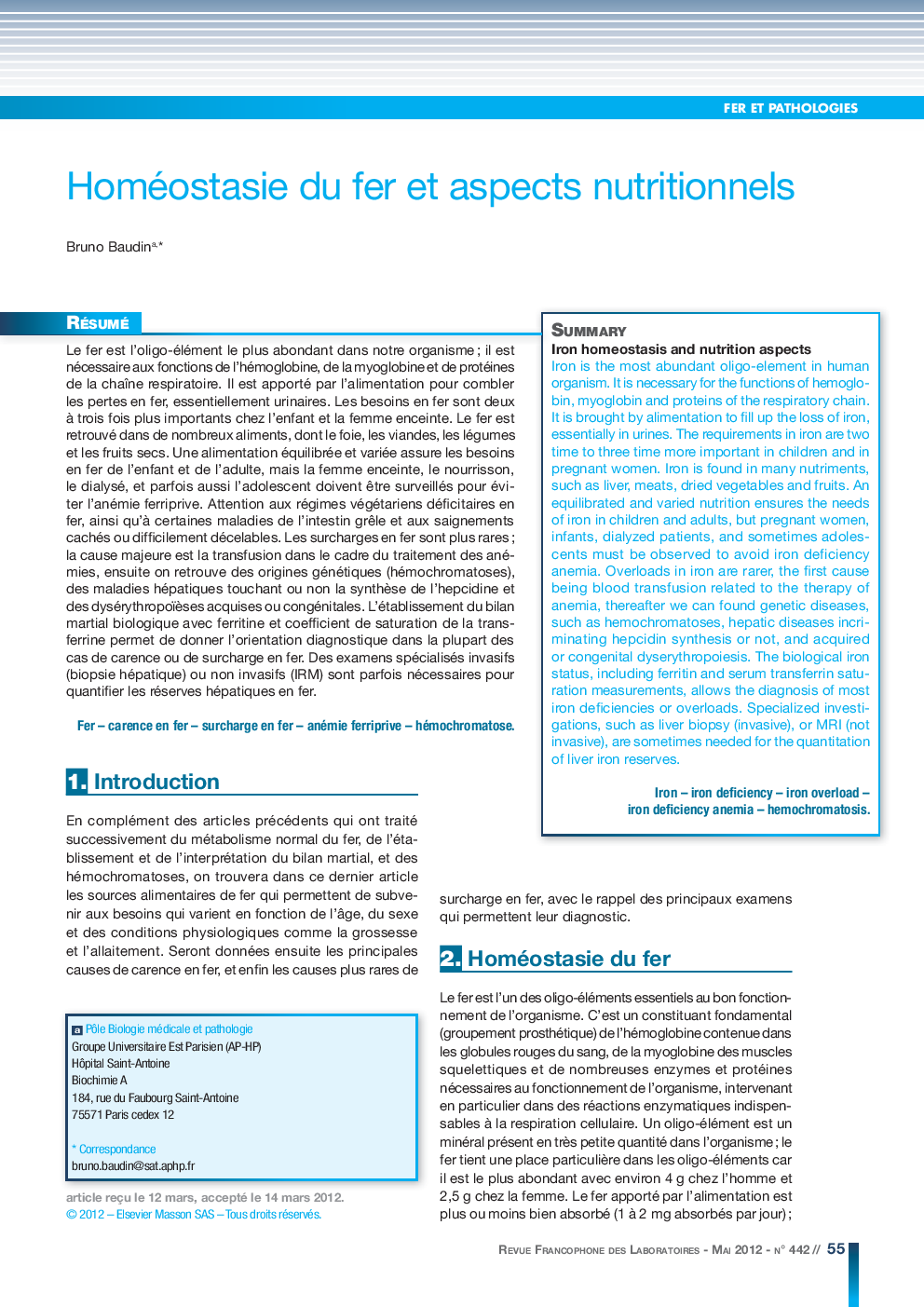| Article ID | Journal | Published Year | Pages | File Type |
|---|---|---|---|---|
| 7654134 | Revue Francophone des Laboratoires | 2012 | 5 Pages |
Abstract
Iron is the most abundant oligo-element in human organism. It is necessary for the functions of hemoglobin, myoglobin and proteins of the respiratory chain. It is brought by alimentation to fill up the loss of iron, essentially in urines. The requirements in iron are two time to three time more important in children and in pregnant women. Iron is found in many nutriments, such as liver, meats, dried vegetables and fruits. An equilibrated and varied nutrition ensures the needs of iron in children and adults, but pregnant women, infants, dialyzed patients, and sometimes adolescents must be observed to avoid iron deficiency anemia. Overloads in iron are rarer, the first cause being blood transfusion related to the therapy of anemia, thereafter we can found genetic diseases, such as hemochromatoses, hepatic diseases incriminating hepcidin synthesis or not, and acquired or congenital dyserythropoiesis. The biological iron status, including ferritin and serum transferrin saturation measurements, allows the diagnosis of most iron deficiencies or overloads. Specialized investigations, such as liver biopsy (invasive), or MRI (not invasive), are sometimes needed for the quantitation of liver iron reserves.
Keywords
Related Topics
Physical Sciences and Engineering
Chemistry
Analytical Chemistry
Authors
Bruno Baudin,
